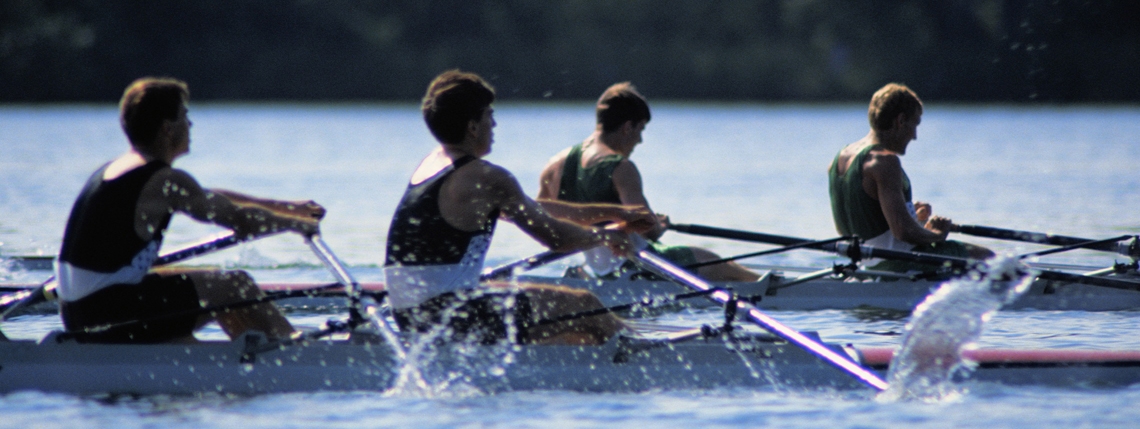British Rowing has released the following information regarding the forthcoming annual Boat Race.1
The official Blue Boat crews have been announced for The Boat Race 2019, and include James Cracknell who will row in the number two seat for Cambridge University Boat Club.
At the age of 46, James will become the oldest Blue by a huge margin. The previous oldest Boat Race competitor was Andy Probert who was 38 when he coxed the Cambridge team in 1992, and Mike Wherley was 35 when he rowed for Oxford in 2008.
Speaking on his achievement, Cracknell said: “It’s impossible to appreciate what getting selected for The Boat Race is actually like. Training so intensively and competing with a group of guys for the same seats in a boat while studying hard at a top university, you could easily fall apart.
“After a tough year, making the Blue Boat is arguably my proudest achievement in rowing, but making the team is only the start; none of us are there for the kit and being selected, it’s about delivering on April 7.”
This year looks set to be another world-class event, showcasing the very best collegiate athletes in the world’s best-known varsity match. To view the squad line-up and for further info, visit: The Boat Race
The race will take place on Sunday 7 April 2019. The Women’s Boat Race will start at 2:13pm, with The Men’s Boat Race at 3:10pm.
References
Fitpro magazine caught up with British Rowing to find out what contributes to great technique on the rowing machine.
FP: What are the benefits of the rowing machine?
BR: Every stroke on the machine uses 85% of your muscles, covering nine major muscle groups, so it is the ultimate whole-body workout. This also makes it a highly efficient fat-burning exercise; there is potential to burn more than 300 calories per 30 minutes of rowing. It is low impact on your joints, so perfect for cross-training, rehabilitation, and for those who are new to exercise.
FP: What would be your top tips for timing?
BR: Firstly, take your time in the recovery phase moving up the slide. Take a deep breath and get ready to use that leg strength on the next stroke. Secondly, keep the flywheel spinning – keep it moving at a constant speed to optimise the efficiency of your workout. Try to row smoothly, and don’t stop at the start or end of your stroke.
FP: Describe some workouts for different abilities.
Beginner: You are able to row at 2:45-3:00 splits/50-60 watts for 5mins
OR
You are able to row at 22spm comfortably for 5mins
2 x 4mins @ 22-24spm
2mins rest in between
Intermediate: You are able to row at 2:25-2:45 splits/70-100 watts for 5mins
OR
You are able to row at 24spm comfortably for 5mins
2mins @ 20spm, 2mins @ 22spm, 2mins @ 24spm, 2mins @ 22spm, 2mins @ 20spm = 10mins total
Advanced: You are able to row at 2:00-2:25 splits/100+ watts for 5mins
OR
You are able to row at 26spm for 5mins
3 x 1min intervals @ 28+spm (90secs rest in between), 3mins rest, 3 x 1min intervals @ 28+spm
90secs rest in between
FP: How can you add variety to a row session?
BR: You can play with the stroke rate, power, distance, time, or all of the above, as follows:
- Stroke rate – using a lower stroke rate can improve your technique and develop an effective rowing style; you will be able to focus on the legs-body-arms/arms-body-legs sequence
- Power – ideally your power should increase as your stroke rate increases, but sometimes it’s good to test yourself to see how much power you can create at a relatively low stroke rate; you will be able to focus on ensuring your drive phase uses all your large lower-body muscles
- Distance/time – try longer distances/time to work on endurance or shorter to develop explosive power; you could even add a circuit of resistance exercises
FP: How can we perfect our posture?
BR: Adjust the height of the monitor to eye level to encourage you to sit up tall throughout the stroke:
- Keep your back long and straight; relax the shoulders
- As you row, allow your body to tip forwards and backwards from your hips; move between 11:00 and 1:00 on a clock face
- Relax and keep a loose grip to ensure you do not use energy unnecessarily
Insight into rowing stroke
Step 1: The drive
The order of sequencing is legs, body, arms:
- Legs: push with your legs, keeping your arms straight for as long as possible; use your core to keep your body rocked forward at a 1:00 position
- Body: once your legs are nearly straight, rock your hips back into an 11:00 position, keeping your arms straight
- Arms: draw the handle into your lower rib cage
Step 2: The recovery
Use this movement as your recovery. The movement works in reverse to the drive:
- Arms: from your finished position, allow your arms to straighten, keeping your spine long and straight
- Body: keeping your legs straight, tip your body forward from your hips, moving from 11:00 to 1:00
- Legs: keeping your body at the 1:00 position, bend your knees and slide forwards until your knees are over your ankles
Things to remember:
- The sequence is key: legs, body, arms, arms, body, legs
- 60% of the power is from the legs, 30% body, 10% arms
- A strong core is essential; plank or side plank are great for strengthening your trunk safely
- Single-arm dumbbell or bent over rows work to strengthen the middle of your back to encourage less rounding of the shoulders
Have you recently taken up rowing or are you helping to train your client for a rowing race? Get in touch with us at: publish@fitpro.com
Where next? Read about how athlete, Kiko Matthews trained for her Atlantic Row challenge HERE







